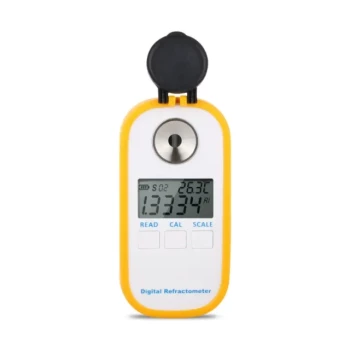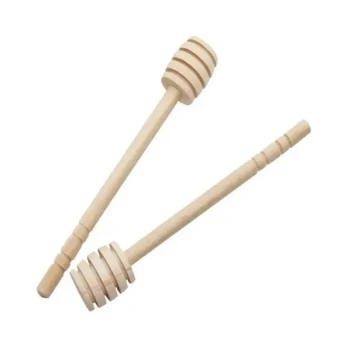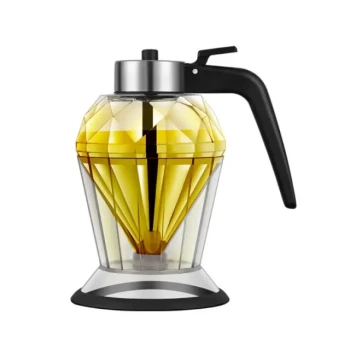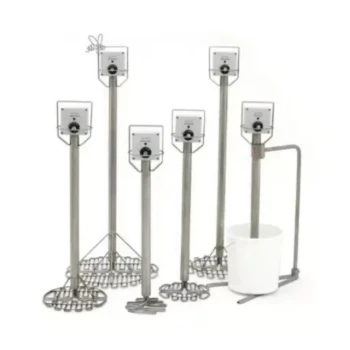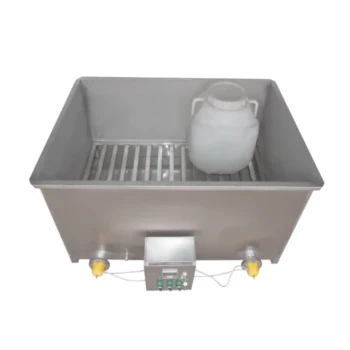To prepare a honey sample for an accurate reading, you must ensure it is completely free of physical impurities like wax, propolis, or other debris. Apply just a small amount to the instrument's prism, creating a thin, even layer that is free of air bubbles.
The accuracy of your measurement depends entirely on the purity and uniformity of the sample you test. The goal is to eliminate all variables—impurities, crystals, and temperature fluctuations—so that the instrument is measuring nothing but the honey itself.
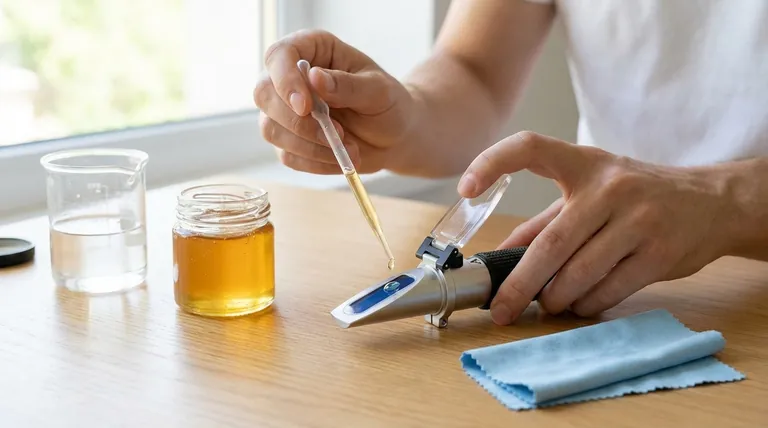
The Principle: Isolating the True Sample
An instrument like a refractometer works by measuring how light passes through a substance. Any foreign material can distort this light path, leading to an incorrect reading. Your preparation process is designed to present a pure, uniform liquid for analysis.
Removing Physical Impurities
Impurities such as fine particles of wax, propolis, or even dust create obstructions.
These solid particles can block or scatter the light being measured, which almost always results in a false reading. A clean sample is non-negotiable.
The Problem with Air Bubbles
Trapped air bubbles are another form of impurity that will interfere with an accurate reading.
Applying the honey as a very thin layer on the prism helps to push out any trapped air, ensuring the instrument's sensor is in full contact with the liquid honey.
Addressing Crystallization
Crystallized honey is not a uniform liquid; it's a mix of solid sugar crystals and a liquid portion with a higher moisture content.
Measuring crystallized honey will give you a reading of the liquid part only, not the entire sample, leading to a falsely high moisture reading. The honey must be gently warmed until all crystals are dissolved and then cooled to room temperature before testing.
The Critical Variable: Temperature Stabilization
Even a perfectly clean sample can produce an incorrect reading if its temperature is not managed correctly. This is one of the most common sources of error.
Why Temperature Changes Everything
The density and refractive index of honey change with its temperature. Most honey refractometers are calibrated to provide an accurate reading at a specific temperature, typically room temperature (around 20°C or 68°F).
If the honey sample is warmer or colder than the instrument, the reading will be inaccurate.
Achieving Temperature Equilibrium
For the most reliable results, the honey sample, the testing instrument, and the ambient air should all be at the same stable temperature.
Allow your sample and your refractometer to sit in the testing environment for a period of time to acclimate before you take a measurement.
A Step-by-Step Guide to Proper Preparation
Follow these steps in order to ensure your sample is ready for a reliable and repeatable measurement.
- Step 1: Ensure the Honey is Liquid. If your honey is crystallized, gently warm the entire container in a water bath until the crystals are fully dissolved. Allow it to cool completely to room temperature before proceeding.
- Step 2: Collect a Representative Sample. Honey can stratify in a large container. Gently stir the bulk honey (avoiding whipping in air) and use a clean, dry tool to extract a small amount.
- Step 3: Apply to the Instrument. Place a small drop or two onto the refractometer prism. The goal is to have just enough to create a thin, even film across the entire surface once the cover plate is closed.
- Step 4: Check for Bubbles and Debris. Close the cover plate and hold the instrument up to a light source. The sample should appear uniform. If you see significant air bubbles or debris, clean the prism and start again with a new sample.
Proper sample preparation is the foundation of a trustworthy measurement, ensuring your results accurately reflect the true quality of your honey.
Summary Table:
| Preparation Step | Key Action | Why It's Critical |
|---|---|---|
| Ensure Liquid State | Gently warm crystallized honey, then cool to room temperature. | Measures the entire sample, not just the liquid portion, to avoid false high moisture readings. |
| Remove Impurities | Filter or strain to eliminate wax, propolis, and debris. | Solid particles scatter light, distorting the instrument's measurement. |
| Eliminate Air Bubbles | Apply a thin, even layer on the prism. | Trapped air creates inconsistencies, preventing full contact with the sensor. |
| Stabilize Temperature | Allow honey and instrument to acclimate to the same ambient temperature (e.g., 20°C / 68°F). | Honey's refractive index changes with temperature; equilibrium ensures calibration accuracy. |
Achieve Unmatched Accuracy in Your Apiary
Consistent, reliable honey quality testing is essential for commercial success. The precision of your refractometer starts with the quality of your tools and sample preparation.
HONESTBEE supplies professional-grade beekeeping supplies and equipment—including precision refractometers, filters, and warming equipment—designed specifically for the demands of commercial apiaries and beekeeping equipment distributors.
We help you eliminate variables and ensure every batch meets your quality standards.
Contact HONESTBEE today to discuss your wholesale needs and equip your operation for precision.
Visual Guide
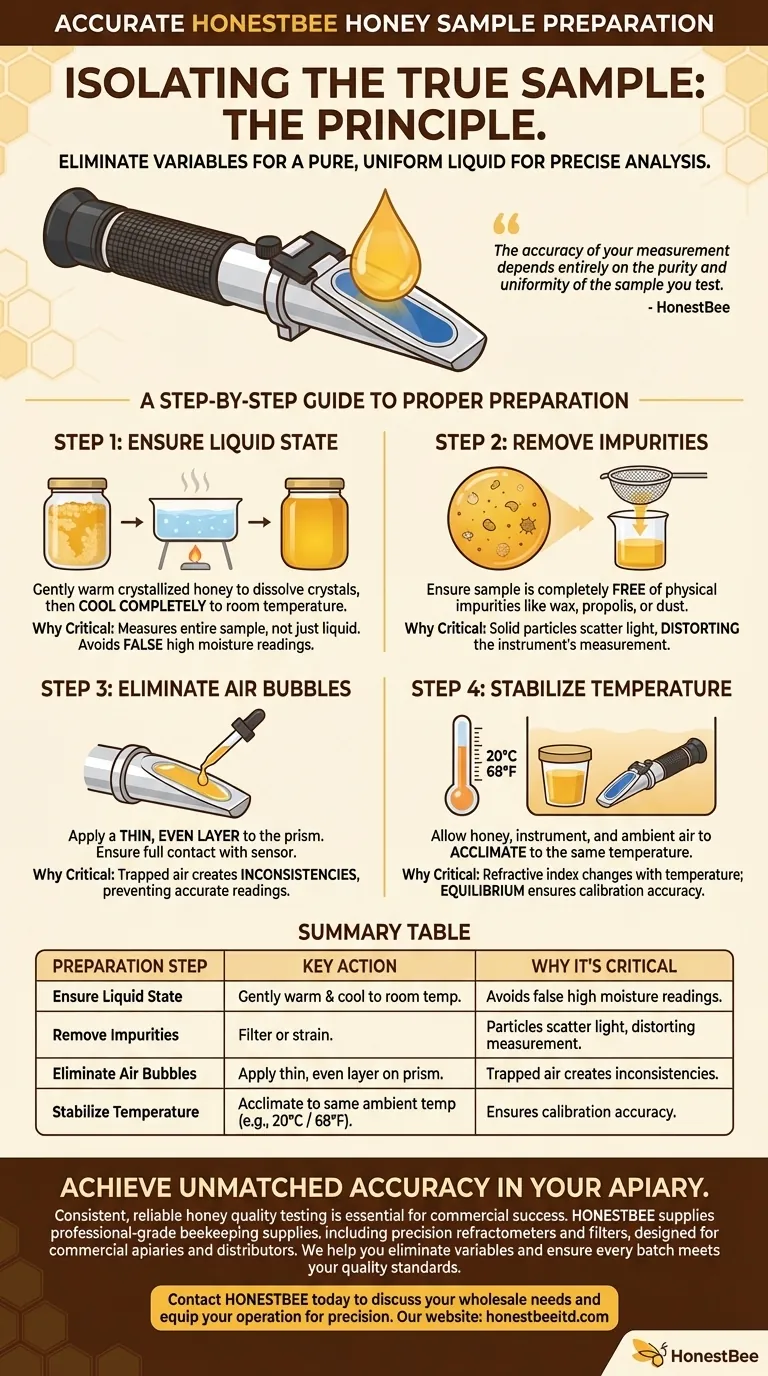
Related Products
- Precision Honey Refractometer Instrument for Quality Assessment
- Digital Honey Refractometer for Precision Measurement of Optimal Honey Quality
- Natural Wood Honey Dipper for Tea Coffee and Desserts
- 24 Frame Honey Extractor Commercial Radial Honey Frame Extraction Machine
- HONESTBEE 3-Frame Manual Acrylic Honey Extractor
People Also Ask
- What is a honey refractometer and what is its purpose? Ensure Honey Quality and Prevent Spoilage
- Why is a honey refractometer essential for honey harvesting? Protect Your Harvest from Spoilage
- What are the key steps to using a honey refractometer? Ensure Honey Quality & Prevent Fermentation
- What are the features of the Standard Refractometer for honey moisture content? Essential Tools for Quality Control
- What are the key points for proper usage of a honey refractometer? Ensure Accurate Moisture Readings Every Time

